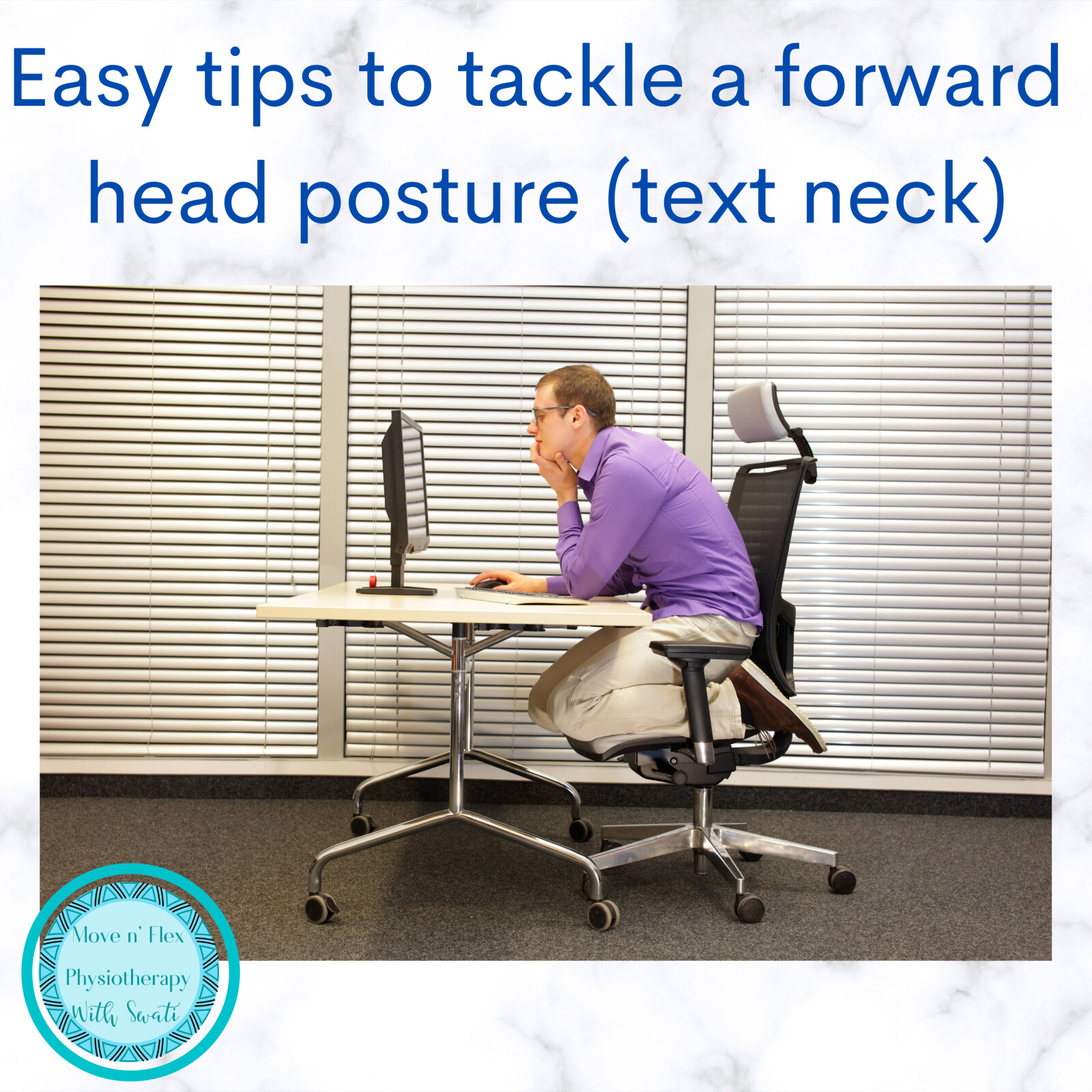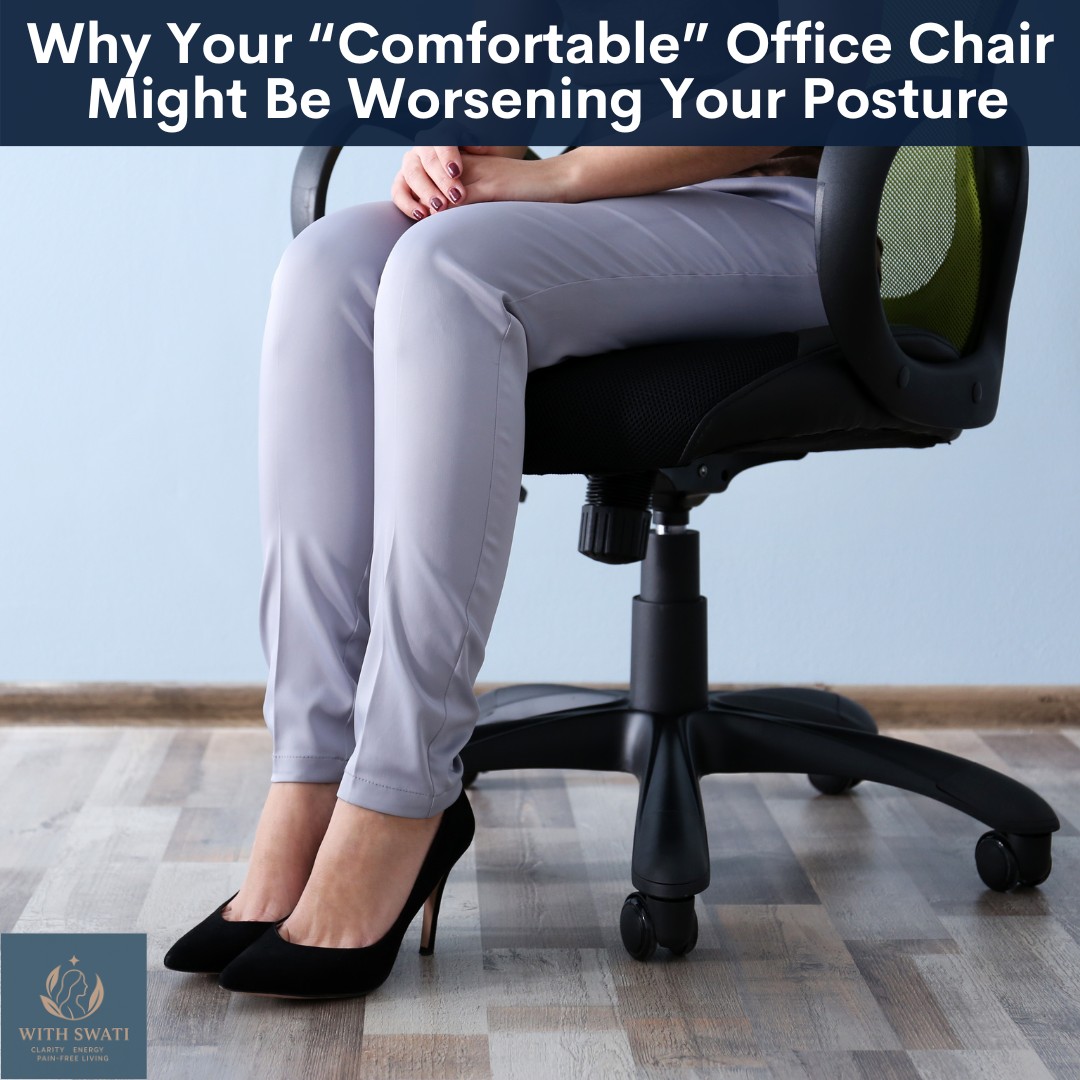
Have you ever felt that your head is placed forwards as compared to the rest of your body? Or do you have a hump on the small of your back that just doesn’t go away? You may have a forward head posture, which is also known as text neck, nerd neck or scholars neck. This is a commonly seen poor posture, which affects a majority of the population. In this blog lets discuss four easy way to manage a Text Neck or Forward Head Posture.
When you have a forward head posture the compressive loading on the spine increases, specially your cervical spine and neighbouring areas. Forward head posture can manifest as:
- Facet joint degeneration
- Disc degeneration or disc prolapse
- Stretching of the ligaments, which means less stability in the spine
- Pain in the temporomandibular joint (TMJ)
- Neck pain
- Numbness or tingling in the arms and/or shoulder blade
- Headache
- Tinnitus (ringing in the ears)
- Blurred vision
- Compromised respiratory function (due to weakening of the respiratory muscles)
- Shoulder pain and dysfunction of the scapula as forward head posture enhances rounded shoulder posture, which places additional stresses on the shoulder joint.
- Tension neck syndrome, which can present as tense muscle in the neck and tension headaches.
Watch this video for three ways to tell if you have a forward head posture:
Here are 4 tips to manage a forward head posture:
- Use a pillow that can help to keep your spine in neutral alignment. If your pillow is too high or if you sleep with your head propped up against the armrest of a sofa your head lies in a flexed or bent forwards. This further enhances the FHP. For more details on pillows read my blog here. If you are still not sure about which pillow to use, HERE is the pillow that I use and recommend.
- Make your workstation ergonomically viable. Nowadays most of us are working from home and have been sitting at desks and working on our computers for hours at a stretch. So it is necessary to make some simple posture friendly adjustments to a workstation. Example: Make sure that your feet are not dangling in the air. Use a stool to rest your feet. Use a chair that supports the whole spine and not just the lower back, such that you can maintain the neutral alignment of the spine.
- When using your mobile phone keep the top of your phone five to ten degrees lower than the neutral gaze of the eye. Same rule applies if you are looking at a computer screen. This helps the head to be in a neutral position and helps eliminate forward head posture.
- If you carry a heavy bag, switch to using a backpack. Make sure you carry the backpack on both the shoulders. Broad straps can help to evenly distribute the weight on your shoulders. If you have to carry a heavy item keep it near the centre of your backpack to avoid excessive strain on your shoulders. Its always a good idea to clear your backpack regularly to get rid of unnecessary items that add weight to your backpack. If backpacks are not a viable option then you can use a bag with wheels as well.
Learn how to achieve and maintain a good posture in the free training: "Posture Tips and Tricks" in my free community HERE.
If you like this blog and want to be notified about new blogs as soon as they are published, subscribe to my mailing list below.
I would love to see you around the internet! For other places you can explore more about me: https://withswati.com/page/link
















1 Comment